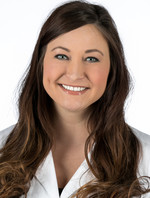




Women's Health
Healthy Female Aging Through the Decades: How to Feel Good in Your 30s, 40s, 50s and Beyond
Published: Dec. 7, 2022

Despite the old adage, age is actually more than just a number. It’s a pretty powerful indicator of how our health might be changing and what our bodies need more of.
Although a healthy diet and exercise are important at any age, here’s what else you may need to focus on in your 30s, 40s, 50s and beyond.
In Your 30s
Primary Care
Aside from maybe a couple smile lines and a few stray grays, you may not look or feel any different than you did in your late 20s. But some of the first changes tied to growing older happen in your 30s. That’s why annual preventive health maintenance visits are more important than ever.
If you don’t yet have a primary care provider, now is the time to establish care with one. They’re often the first to identify any brewing health issues you may have, and they can help you tackle important health goals you may be putting off.
Metabolism
Do you suddenly feel like it’s becoming harder to maintain your weight? Perhaps you’ve noticed a few pounds creep on as your metabolism starts to slow and life gets busier between your work and family.
Plan ahead with healthy meals and snacks so you’re less tempted to hit the drive-thru.
If you don’t already have a consistent exercise routine that includes aerobic activity and strength training, consider starting one. Especially in this season of life, you’re less likely to stay consistent – or even get in a workout at all – if you don’t actually schedule time to exercise.
Bone Density
Exercise can also help prevent bone and muscle loss, which – you guessed it – begins in your 30s.
Aim for 30 to 60 minutes of moderate exercise (such as brisk walking) at least five days a week. And incorporate strength training (such as lifting weights) at least two days a week.
Also, be sure your diet contains plenty of calcium (about 1,000 milligrams) and protein (about 1 gram per 2.2 pounds of your body weight) each day.
Fertility
Fertility begins to decrease in your 30s, especially after 35. This is troublesome for many couples, as this is usually the time when they feel mentally and financially secure enough to start or grow a family. If you’re having trouble conceiving, talk to your health care provider or a fertility specialist.
If you’re over 35 and pregnant, you may be referred to a high-risk OB/GYN to ensure the healthiest pregnancy possible. Although there are more risks associated with pregnancy in your mid-30s and beyond, know that a normal pregnancy and healthy baby are absolutely attainable with a healthy lifestyle and early prenatal care.
In Your 40s
Sleep
40 often gets a bad rap – likely because it’s about the age most people begin to notice more pronounced health changes. And one of the biggest health issues affecting many in the 40-and-over club is sleep quality.
Now, more than ever, it’s important to establish a consistent nighttime routine. Avoid exercise, screens and anything that might cause unnecessary stress at least a couple of hours before you hit the sack. Instead, read a book, sip some tea or practice meditation. The goal is to induce a sense of calm before turning out the lights.
Chronic sleep deprivation can lead to poor productivity, mindless eating, high caffeine consumption and a host of serious health issues over time. Talk with your provider if your best efforts at getting seven to nine hours of uninterrupted sleep a night just aren’t working.
Skin
By now, you’ve probably adopted a tried-and-true skincare routine to help fight the more visible effects of aging. But don’t forget about the skin beyond your face.
Make sure you’re staying hydrated, applying sunscreen all year long, visiting the dermatologist regularly and keeping a close eye on any skin changes. It’s not common for someone 40 or older to develop a new mole. So if one appears, make an appointment with your dermatologist right away.
Breast Health
Most women should start annual screening for breast cancer around age 40. But talk with your doctor about when it’s right for you.
Staying hydrated and limiting alcohol can also help aid in better breast health.
Prevention
The risk of disease increases as we age, so now is the time to really hone in on prevention. Filling your diet with fiber- and antioxidant-rich foods while cutting back on alcohol, sugar and refined carbohydrates can help ward off disease.
While you may not be able to exercise with as much intensity as you did in your 20s, keep moving! Only about half of U.S. adults get the physical activity necessary to prevent cancer, diabetes and heart disease. Even a 15 minute walk each day is enough to lower your risk of stroke and improve your cognitive function.
Lastly, don’t shrug off important screenings. Tell your provider if you have a history of any cancers or disease. Those at average risk of colon cancer should get their first colonoscopy at 45. Pap test screenings should be done every three to five years until age 65. And cholesterol screenings – or lipid panels – should be done annually.
In Your 50s and Beyond
Menopause
Perhaps the biggest elephant in the room as you approach 50 is menopause. Sure, it’s associated with a slew of unfavorable symptoms – such as mood swings, weight gain, hot flashes, night sweats and uncomfortable sex – but it can be a peaceful transition with the right lifestyle and treatments.
The dip in estrogen your body experiences during menopause can result in increased bone loss. Talk to your provider about whether medications or supplements are necessary to help prevent osteoporosis or fractures. Hormone therapy is also available to help address hot flashes, mood swings and vaginal dryness. Your provider may also recommend a bone density scan if you’re 65 or older.
In the meantime, don’t skimp on nutrition and fitness. Consuming plenty of whole foods, dairy and vitamin D (600 IU daily for those age 51-70) can help reduce menopause symptoms. And squeezing in plenty of weight-bearing exercise (such as dancing, walking and stair climbing) along with a little resistance training can help keep your bones strong.
Muscle
Speaking of resistance training, it’s important not only for your bones, but your muscles in general.
We start to lose muscle at a much faster rate in our 50s, so make those weights – and other strength-training exercises (such as pushups and lunges) – more of a priority than ever. The more muscle mass you maintain, the better strength and balance you’ll have, which is critical as you age.
Joints
Age 50 – and for many people, before – is usually when stiff and achy joints become more apparent. That’s because the tissue surrounding our joints get thinner as we age.
Staying hydrated and active is key. Even slight dehydration can exacerbate joint pain. And remember, excess weight can put more stress on your joints – another reason to maintain a healthy weight.
If you’re experiencing chronic joint pain, talk to your provider to rule out arthritis. But keep in mind: There are various medications and supplements that can help.
Immune System
Age-related immune system weakening is a real thing.
By the time you reach 50, your body starts to make less infection-fighting cells needed to fend off viruses like influenza and COVID-19 – which can cause serious complications in older adults.
Be sure to stay up to date on all your vaccines – including those for shingles, COVID-19 and pneumococcal disease. Talk to your doctor about any other vaccines you may benefit from, focus on a nutrient-dense diet, and support your gut health.
A Healthy Aging Takeaway
Although health issues tend to increase with age, that doesn’t have to mean a decreased quality of life. Take charge of your health with a proactive mindset and regular conversations with your Methodist provider. You only get one body. Let us help you take care of it at every age.
More Resources
- Find a primary care provider today.
- Learn more about Methodist’s women’s health services.
- Learn more about osteoporosis, and start building stronger bones.
- Learn more about Methodist’s nutrition and weight management services.
- Learn more about Methodist’s sleep services.


